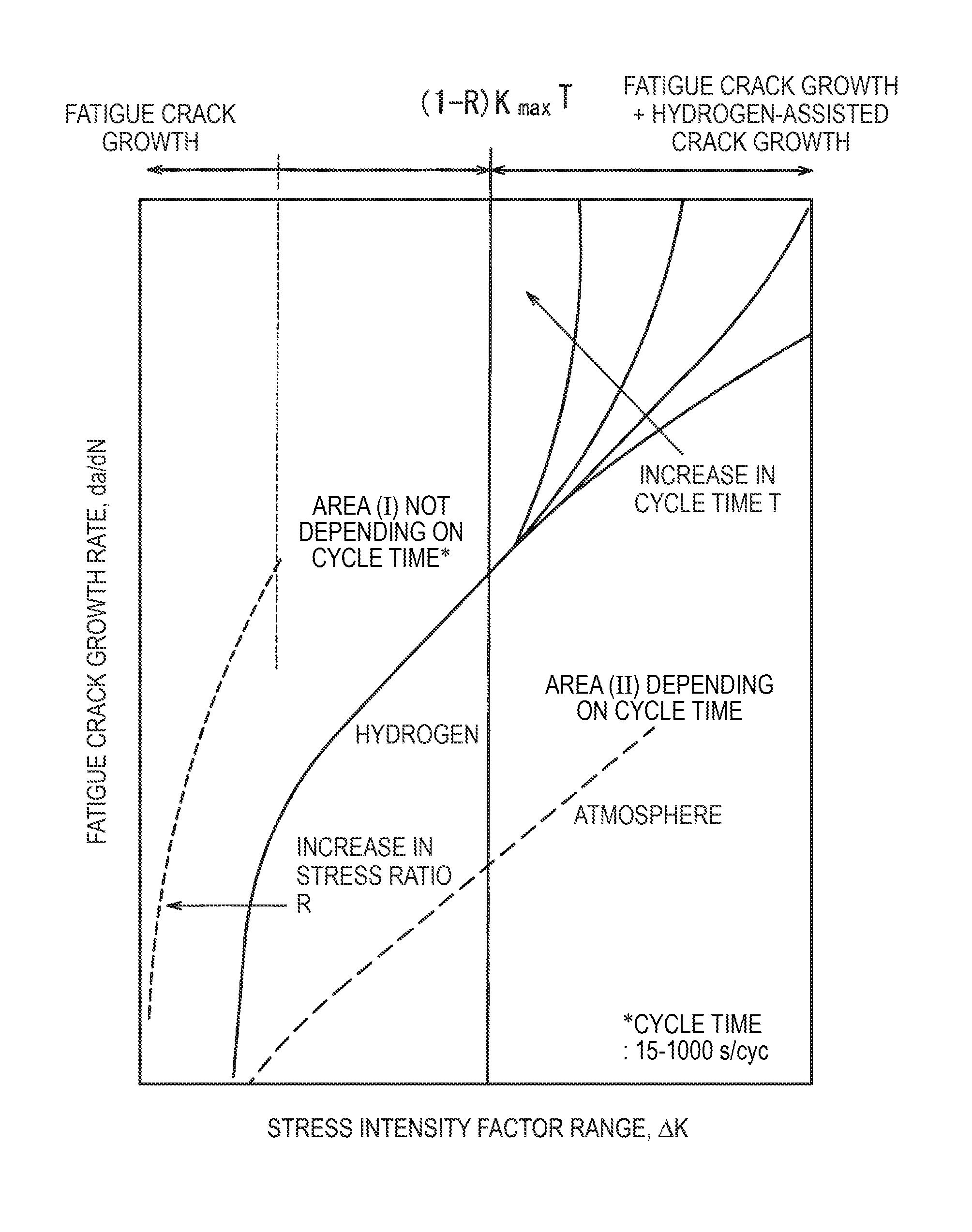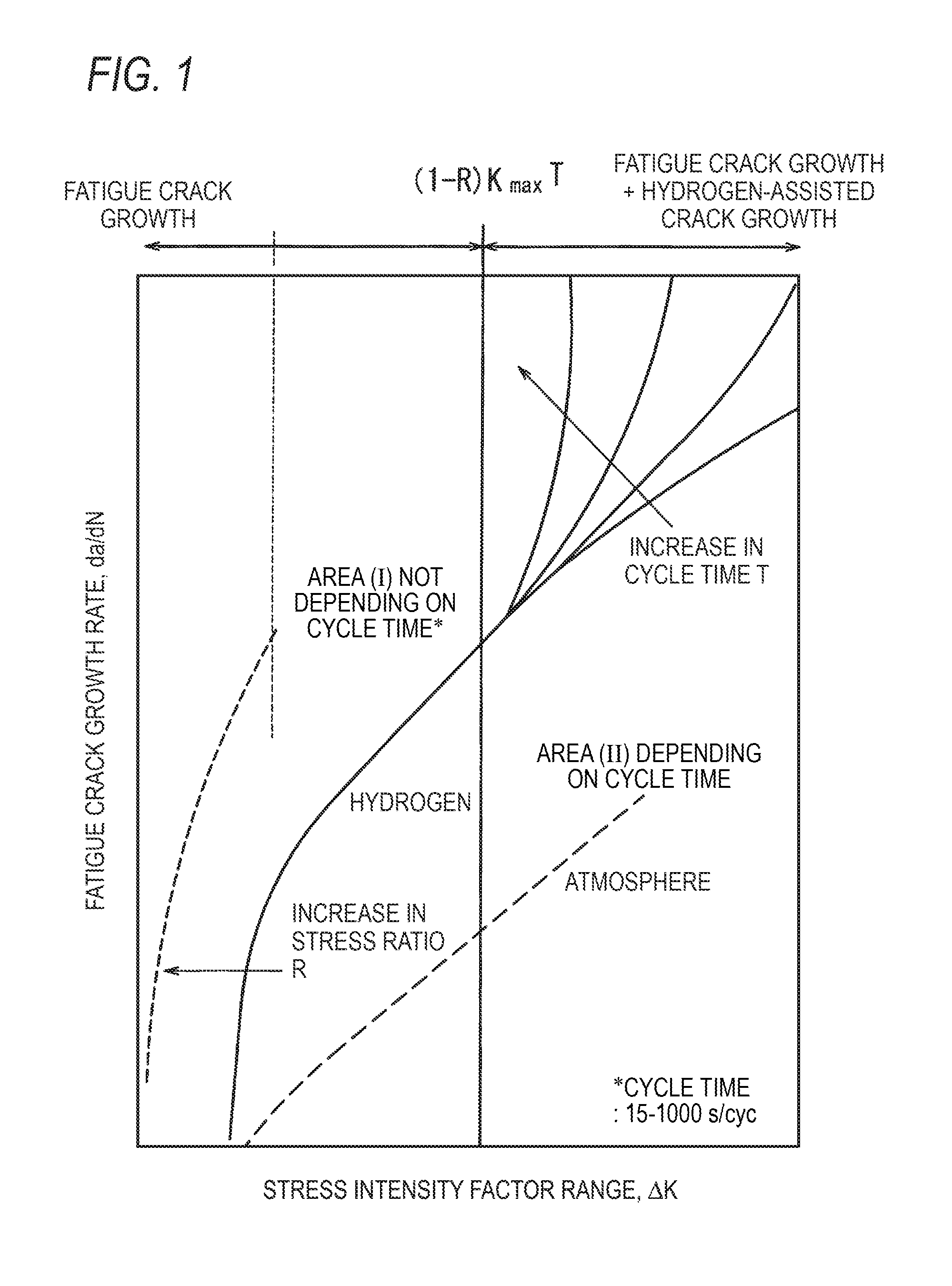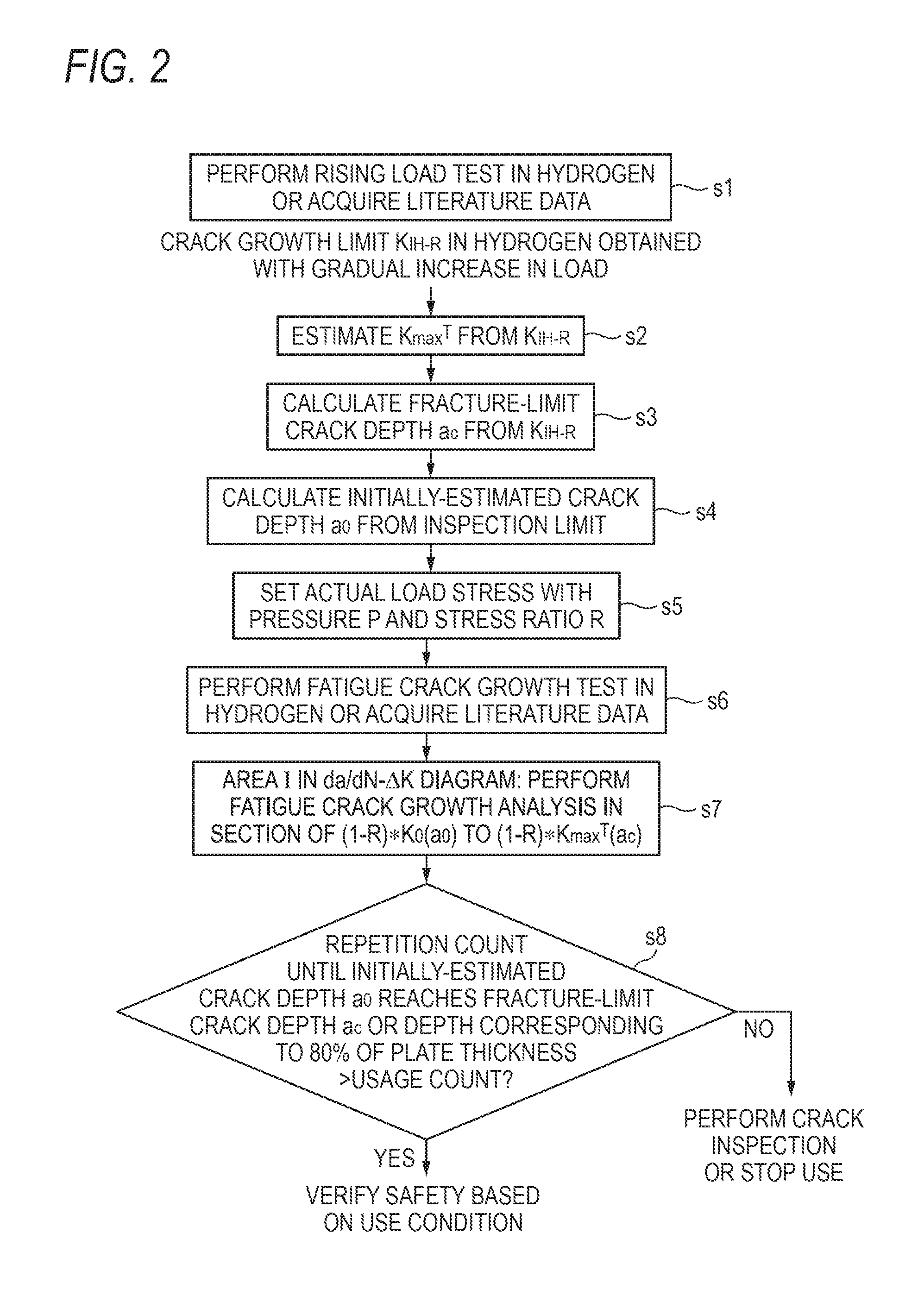Method of determining fatigue crack lifetime in high-pressure hydrogen environment
a technology of high-pressure hydrogen and lifetime, applied in the direction of instruments, using mechanical means, and analysing solids using sonic/ultrasonic/infrasonic waves, etc., to achieve enhanced accuracy, shorten the total time, and improve the effect of fatigue crack lifetime evaluation
- Summary
- Abstract
- Description
- Claims
- Application Information
AI Technical Summary
Benefits of technology
Problems solved by technology
Method used
Image
Examples
example 1
(Correlation between Fatigue Crack Acceleration Starting Point KmaxT and Crack-growth Threshold Stress Intensity Factor KIH-R)
[0085]As examples of low-alloy steel used for a steel pressure accumulator, SCM435 steel and SNCM 439 steel shown in Table 1 were subjected to heat treatment shown in Table 2 and were used as materials under test. Mechanical characteristics of the materials under test are shown in Table 2.
[0086]By performing a fatigue crack growth test in a high-pressure hydrogen environment of 90 MPa or less and evaluating the influence of the repetition cycle time, the fatigue crack acceleration starting point KmaxT for each material under test was obtained.
[0087]A rising load test was performed on the same low-alloy steel and the crack-growth threshold stress intensity factor KIH-R was obtained. A delayed crack test was performed on the same low-alloy steel and the crack-growth threshold stress intensity factor KIH-H was obtained.
[0088]Details of the fatigue testing machin...
PUM
| Property | Measurement | Unit |
|---|---|---|
| temperature | aaaaa | aaaaa |
| temperature | aaaaa | aaaaa |
| pressure | aaaaa | aaaaa |
Abstract
Description
Claims
Application Information
 Login to View More
Login to View More - R&D
- Intellectual Property
- Life Sciences
- Materials
- Tech Scout
- Unparalleled Data Quality
- Higher Quality Content
- 60% Fewer Hallucinations
Browse by: Latest US Patents, China's latest patents, Technical Efficacy Thesaurus, Application Domain, Technology Topic, Popular Technical Reports.
© 2025 PatSnap. All rights reserved.Legal|Privacy policy|Modern Slavery Act Transparency Statement|Sitemap|About US| Contact US: help@patsnap.com



